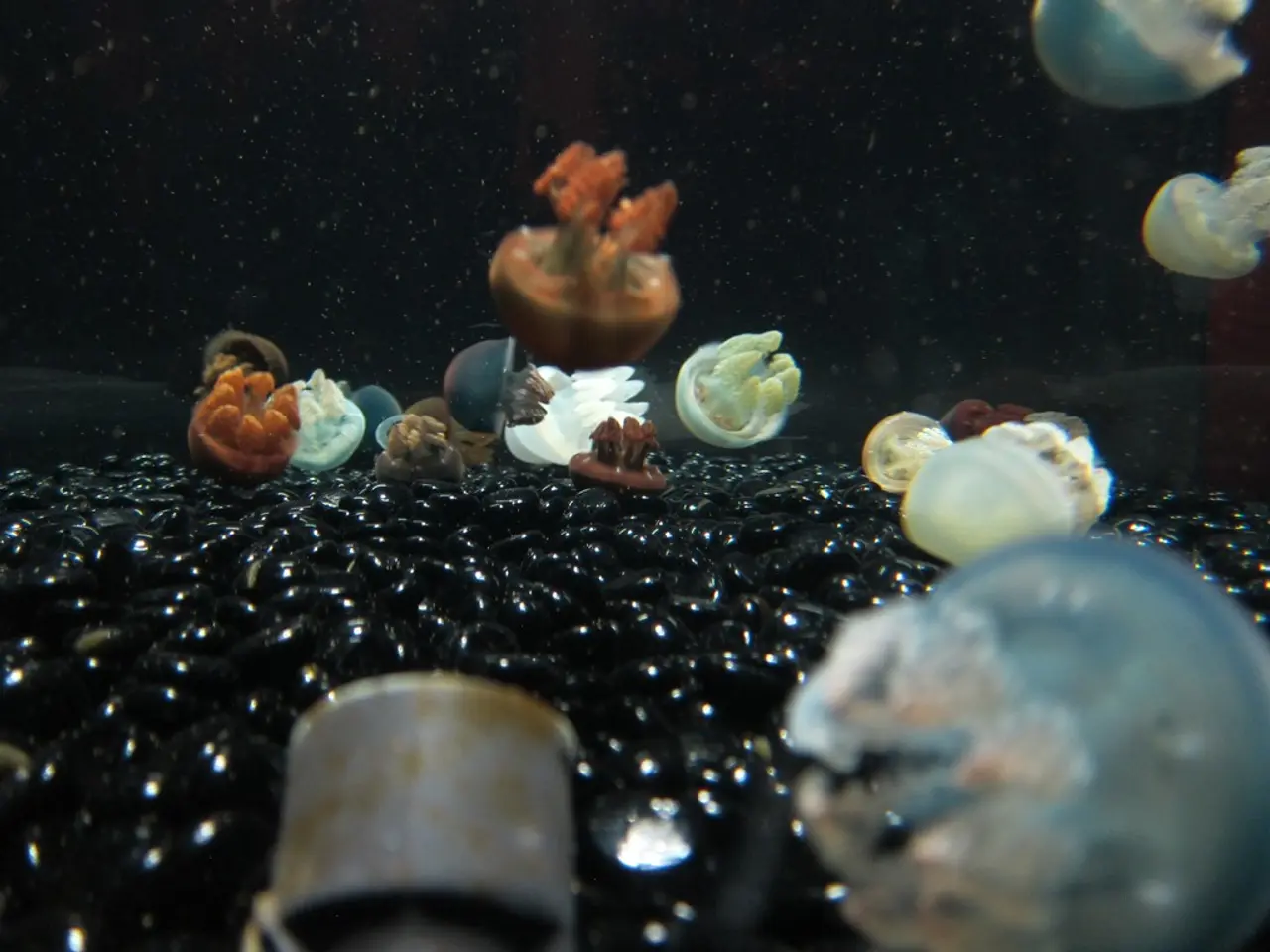Fatal bacterial infection claimed life following a swim in the Baltic Sea
In a concerning development, health authorities in Mecklenburg-Vorpommern have reported the first case of vibriosis for the current swimming season. The exact source of the man's infection is yet to be definitively determined, and no direct connection has been established between the laboratory findings and his unfortunate demise.
The 68-year-old man, who was largely self-sufficient and resided in an assisted living facility, had multiple chronic illnesses but the specific details have not been disclosed by the authorities. The man contracted the dangerous bacteria within the jurisdiction of the State Office for Health and Social Affairs (LAGuS), between Boltenhagen and Usedom.
Vibriosis is an infection caused by bacteria of the genus Vibrio, particularly Vibrio vulnificus, which naturally inhabit warm coastal and brackish waters. The infection primarily occurs from consuming raw or undercooked shellfish, such as oysters, mussels, or clams, contaminated with the bacteria, or through open wounds exposed to these waters.
As a precaution, people with chronic illnesses, weakened immune systems, or advanced age—groups at higher risk—should avoid eating raw or undercooked shellfish to prevent ingestion of Vibrio bacteria. These bacteria filter and concentrate during warmer months (May to October). Additionally, it is advisable to protect open wounds and cuts from exposure to salt or brackish water to prevent infection via skin breaches.
If symptoms such as redness, swelling, pain at a wound site, nausea, vomiting, diarrhea, fever, or chills appear after exposure or consumption of suspect seafood, immediate medical attention should be sought. Early treatment with antibiotics significantly improves outcomes for those at risk, including individuals with underlying conditions like liver disease, diabetes, or immunosuppression who face increased risk of severe infection and complications.
An increased occurrence of vibriosis is expected throughout the Baltic Sea, in the Bodden waters, and in the Achterwasser until the end of the swimming season. It is therefore essential for individuals belonging to the aforementioned risk groups to avoid contact with seawater or brackish water (Bodden) if they have skin injuries.
In light of this incident, it is a reminder for everyone, especially the vulnerable groups, to take necessary precautions when engaging in water activities and consuming seafood in the region. The LAGuS has not released further details about the man's case, but has emphasized the importance of following the prevention measures to minimise the risk of vibriosis infections.
[1] Centers for Disease Control and Prevention. (2020). Vibriosis. Retrieved from https://www.cdc.gov/vibrio/vibriosis/index.html
[2] Food and Drug Administration. (2021). Vibrio vulnificus. Retrieved from https://www.fda.gov/food/bacterial-foodborne-pathogens/vibrio-vulnificus
[3] World Health Organization. (2020). Vibrio infections. Retrieved from https://www.who.int/news-room/fact-sheets/detail/vibrio-infections
[4] European Centre for Disease Prevention and Control. (2021). Vibrio infections. Retrieved from https://www.ecdc.europa.eu/en/vibrio-infections
[5] European Food Safety Authority. (2021). Vibrio in shellfish. Retrieved from https://efsa.europa.eu/en/topics/topic/vibrio-in-shellfish
- Science has shed light on the dangerous bacterium, Vibrio vulnificus, which is responsible for vibriosis infections.
- The Centers for Disease Control and Prevention (CDC) provides comprehensive information about vibriosis.
- Medical-conditions such as liver disease, diabetes, and immunosuppression increase the risk of severe vibriosis infections.
- Chronic diseases can compromise one's immunity, making them more susceptible to vibriosis.
- The Food and Drug Administration (FDA) emphasizes the importance of handling seafood properly to prevent vibriosis infections.
- Consuming raw or undercooked shellfish can lead to the contraction of vibriosis, especially in warmer months.
- Respiratory-conditions and digestive-health issues may worsen due to complications arising from vibriosis infections.
- Eye-health and hearing impairments may arise as a consequence of vibriosis, affecting overall health-and-wellness.
- Fitness-and-exercise regimens can help bolster the immune system, reducing the risk of vibriosis and other chronic-diseases.
- Autoimmune-disorders could potentially exacerbate the severity of vibriosis infections.
- Climate-change effects, such as warmer waters, could increase the proliferation of vibriosis-causing bacteria.
- The manufacturing industry should adhere to strict safety measures during the processing and handling of seafood to prevent vibriosis outbreaks.
- Mental-health well-being is crucial for a balanced lifestyle in managing the stress and anxiety associated with health threats like vibriosis.
- Aging can weaken the immune system, making older adults more vulnerable to vibriosis and its associated risks.
- Cardiovascular-health is essential for maintaining a strong system capable of fighting infections like vibriosis.
- The industry is dedicated to finding ways to minimize the risk of vibriosis by ensuring safe practices in the handling and consumption of shellfish.
- Neurological-disorders could potentially trigger severe complications from vibriosis infections.
- Environmental-science studies can help identify the impact of vibriosis on the ecosystem and potential sources of contamination.
- Finance plays a role in funding research and initiatives aimed at preventing and managing vibriosis infections.
- Energy consumption and the environmental impact of the manufacturing and transportation industries should be considered in the context of vibriosis prevention efforts.
- Skin-conditions, particularly those affecting the extremities, can serve as entry points for vibriosis-causing bacteria.
- Space-and-astronomy research might pave the way for advanced medical treatments and diagnostics to combat vibriosis and other chronic diseases.
- Retail establishments in coastal areas should prioritize food safety to combat vibriosis and promote public health.
- Interior-design choices can influence overall health-and-wellness by creating an inviting and welcoming environment conducive to healing.
- Cooking safe practices, such as properly cooking shellfish, can significantly reduce the risk of vibriosis infections.
- Transportation infrastructure should be designed to accommodate individuals with water-related health concerns, such as vibriosis.
- Wearables and smart-home-devices can help monitor vital signs, potentially providing early detection and notifications for vibriosis infections.
- Cybersecurity measures are essential in protecting personal information and privacy related to health-related data, including vibriosis cases.




